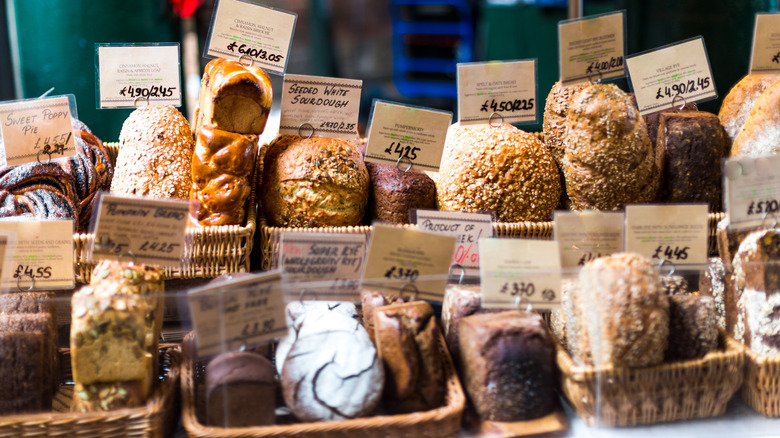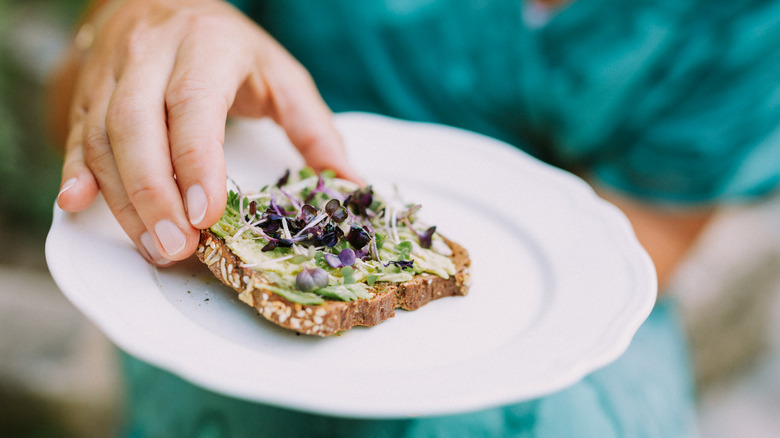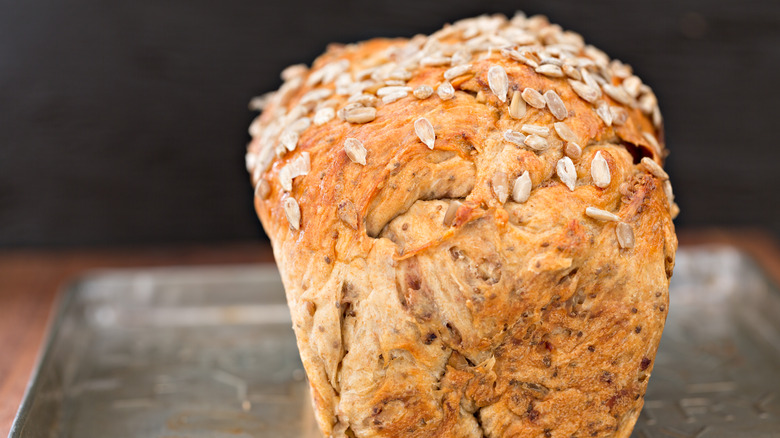Sprouted Vs Seeded Bread: What's The Difference?
It seems like calling one bread "seeded" and another "sprouted" might be a distinction without much of a difference. After all, don't seeds ultimately sprout? Isn't that how we get the grains to make the bread in the first place? Well, shockingly enough, these are actually two quite different kinds of bread, because sprouted bread is made from flour derived from germinated (or sprouted) grains, which basically provides a nutritive afterburner. Seeded bread, conversely, is just regular bread made more delicious by the inclusion of various tasty seeds during or immediately after being baked.
Now don't get us wrong: Adding seeds to bread does more than provide a tempting crunchy texture. Many of the seed varieties used on bread — like pumpkin, sunflower, chia, and the like — carry their own health benefits such as added fiber, vitamins, and minerals. But ultimately, when compared to the sprouted version, seeded bread is mere ornamentation.
Sprouts versus seeds
It's almost a healthy food cliche that sprouts are good for you, or that sprouted products like Ezekiel bread are some kind of chewy, pricey, superfood. But there's quite a bit of truth here. Processed white bread flour is basically devoid of any nutritive value; that goes away with the wheat's germ and bran. What's left is a glutinous starch with a longer shelf life that's guaranteed to spike your blood sugar levels. (For these reasons, some doctors avoid eating bread altogether.) Grains that are allowed to germinate prior to grinding them into flour have far greater amounts of vitamins (particularly E and C), anti-inflammatory nutrients and antioxidants, probiotics, and less gluten — which might make for a denser bread but one that also has a much lower glycemic index. Sprouted breads are typically found in the grocery store's frozen section because of their limited shelf stability.
The healthy benefits of seeded bread lie in what those crunchy additives are bringing to the table, because the bread itself is made from processed flour. But don't write it off: Sunflower seeds alone are quite impressive in the health benefits department. The fats and protein in sunflower seeds slow sugar absorption from carbohydrates, their unsaturated fats lower "bad" cholesterol, and their magnesium helps lower blood pressure. Clearly, seeded bread is a more healthy option than the unadorned kind and usually can be found alongside it in the bakery section of any grocery store.
The all-important taste test
Seeded bread is going to taste more ... familiar than sprouted bread. (Have you recently eaten a pastrami sandwich? Rye bread is suffused with caraway seeds.) Seeded bread will have the airier, yeastier profile we're used to, with the added texture and taste of yummy seeds inside or on top. Also, if you haven't made French toast from sunflower bread, do so as soon as possible and thank us later.
Because of the characteristic of flour made from germinated grains, sprouted bread is nuttier, denser, and more chewy. This is because the grains are ground into a meal, not a powdery flour — so some of them make it into the bread more or less whole, providing a great deal of texture. But while sprouted bread is indeed the healthiest choice (with an indisputably lower glycemic load), don't assume it's gluten free. If you have a gluten allergy or intolerance, check the label.


